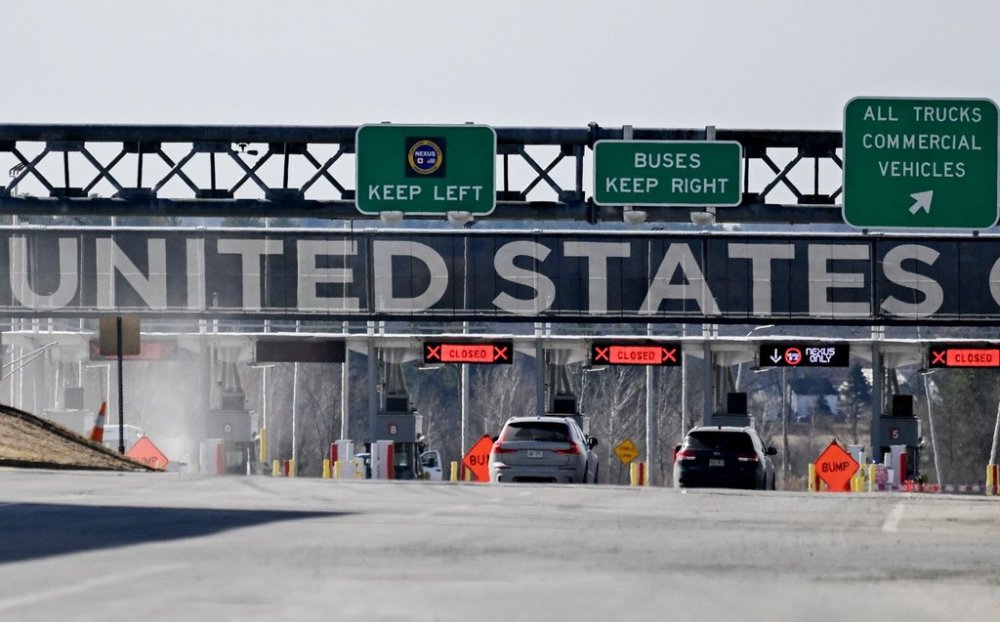Ottawa cuts tariff relief on some American cars due to Stellantis, GM cuts
Advertisement
Read this article for free:
or
Already have an account? Log in here »
To continue reading, please subscribe:
Monthly Digital Subscription
$0 for the first 4 weeks*
- Enjoy unlimited reading on winnipegfreepress.com
- Read the E-Edition, our digital replica newspaper
- Access News Break, our award-winning app
- Play interactive puzzles
*No charge for 4 weeks then price increases to the regular rate of $19.00 plus GST every four weeks. Offer available to new and qualified returning subscribers only. Cancel any time.
Monthly Digital Subscription
$4.75/week*
- Enjoy unlimited reading on winnipegfreepress.com
- Read the E-Edition, our digital replica newspaper
- Access News Break, our award-winning app
- Play interactive puzzles
*Billed as $19 plus GST every four weeks. Cancel any time.
To continue reading, please subscribe:
Add Free Press access to your Brandon Sun subscription for only an additional
$1 for the first 4 weeks*
*Your next subscription payment will increase by $1.00 and you will be charged $16.99 plus GST for four weeks. After four weeks, your payment will increase to $23.99 plus GST every four weeks.
Read unlimited articles for free today:
or
Already have an account? Log in here »
OTTAWA – The federal government is limiting how many vehicles Stellantis and GM can import tariff-free after both companies cut back on their Canadian operations.
Federal officials said Canada is limiting how many U.S.-assembled vehicles can be imported without facing retaliatory tariffs.
They said the measures come into place immediately.

In April, the government imposed retaliatory tariffs on certain U.S. goods, but carved out exemptions for some automakers to bring specific numbers of vehicles into the country, known as remission quota.
Ottawa says accessing this tariff-free quota came with terms requiring each company to maintain Canadian jobs and investment, and both companies have announced cuts in recent weeks.
Ottawa is reducing the remission quota for General Motors by 24 per cent, and is doing the same for Stellantis by 50 per cent.
General Motors this week announced it will end production of BrightDrop electric vans in Ingersoll, Ont., while Stellantis has announced a plan to move production of the Jeep Compass from Brampton, Ont., to Illinois.
In a statement late Thursday, the government said the decisions of both companies “go against their commitments to Canada and Canadian workers” made this spring.
“We expect these companies to meet their contractual obligations and respect their commitments.”
Meanwhile, Canada’s ambassador to Mexico said Thursday that U.S. President Donald Trump has “unrealistic” expectations about going it alone to build vehicles without North American inputs.
“It’s simply not possible for the United States to make cars all by itself, in the near term,” Cameron MacKay testified Thursday to the Senate foreign-affairs committee.
“President Trump and his administration have been clear what they see as the future of auto production in North America. I will say that I think some of that ambition is unrealistic.”
The Trump administration has repeatedly said it wants to manufacture vehicles with few foreign parts. During an Oct. 7 visit to the Oval Office, Trump told Prime Minister Mark Carney that “Americans don’t want to buy cars that are made in Canada,” but added that “We want Canada to do well, making cars.”
Trump said he was working on a “formula” with Canada on its role in building cars, but also suggested he doesn’t want Canadian steel or aluminum in American auto supply chains. “At a certain point, it won’t make economic sense for Canada to build those cars,” he added.
While the U.S. has levied tariffs on various vehicles and components, MacKay said Thursday there are still parts American companies need they can only get from Canada as well as Mexico.
He says there could be “considerable alignment” between the Canadian and Mexican negotiating positions on the issue, in the looming review of the North American deal.
Also Thursday, Ontario Premier Doug Ford said he has full confidence in Carney’s negotiations with the U.S., despite Ford having a more combative tone.
Ford has suggested Canada amp up its retaliation against Washington, but said he is in line with Carney.
“It might be a little easier for me to sit here, and say what I say, but it’s a lot tougher when someone’s sitting across from Donald Trump and he has a big hammer in his hand,” Ford said at a presser, standing next to Carney.
“I support the prime minister, 1,000 per cent.”
Carney said he is working with the U.S. on trade in numerous sectors, while also helping ensure Canadian workers are paid when American companies shift their plans, while creating new opportunities for jobs in fields like manufacturing for defence needs.
“The situation in terms of U.S. tariffs has changed dramatically in several of our most important industries, particularly in the auto sector,” Carney said at a Thursday news conference.
Conservative Leader Pierre Poilievre said Thursday that Carney has not met his own pledge to have a deal with Washington in June
“We needed him to actually keep his promise and defend autoworkers in the negotiations with the Americans,” he said on Parliament Hill, saying his party would cut taxes on Canadian-made cars and end the electric-vehicle mandate.
This report by The Canadian Press was first published Oct. 23, 2025.


